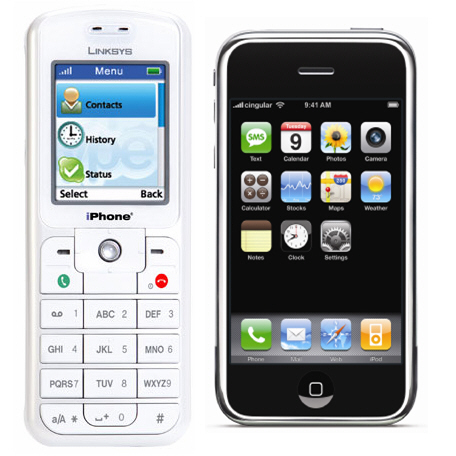Cisco explains its decision to sue Apple

Mark Chandler, Cisco's senior vice president and general counsel, blogs about Apple's infringement of Cisco's iPhone trademark. Following is the post, with my bolding:
Today’s announcement from Cisco regarding our suit with Apple over our iPhone trademark has spurred a lot of interesting questions. Most importantly, this is not a suit against Apple’s innovation, their modern design, or their cool phone. It is not a suit about money or royalties. This is a suit about trademark infringement.
Cisco owns the iPhone trademark. We have since 2000, when we bought a company called Infogear Technology, which had developed a product that combined web access and telephone. Infogear’s registrations for the mark date to 1996, before iMacs and iPods were even glimmers in Apple’s eye. We shipped and/or supported that iPhone product for years. We have been shipping new, updated iPhone products since last spring, and had a formal launch late last year. Apple knows this; they approached us about the iPhone trademark as far back as 2001, and have approached us several times over the past year.
For the last few weeks, we have been in serious discussions with Apple over how the two companies could work together and share the iPhone trademark. We genuinely believed that we were going to be able to reach an agreement and Apple’s communications with us suggested they supported that goal. We negotiated in good faith with every intention to reach a reasonable agreement with Apple by which we would share the iPhone brand.
So, I was surprised and disappointed when Apple decided to go ahead and announce their new product with our trademarked name without reaching an agreement. It was essentially the equivalent of “we’re too busy.” Despite being very close to an agreement, we had substantive communications from Apple after 8pm Monday, including after their launch, when we made clear we expected closure. What were the issues at the table that kept us from an agreement? Was it money? No. Was it a royalty on every Apple phone? No. Was it an exchange for Cisco products or services? No.
Fundamentally we wanted an open approach. We hoped our products could interoperate in the future. In our view, the network provides the basis to make this happen—it provides the foundation of innovation that allows converged devices to deliver the services that consumers want. Our goal was to take that to the next level by facilitating collaboration with Apple. And we wanted to make sure to differentiate the brands in a way that could work for both companies and not confuse people, since our products combine both web access and voice telephony. That’s it. Openness and clarity.
At MacWorld, Apple discussed the patents pending on their new phone technology. They clearly seem to value intellectual property. If the tables were turned, do you think Apple would allow someone to blatantly infringe on their rights? How would Apple react if someone launched a product called iPod but claimed it was ok to use the name because it used a different video format? Would that be ok? We know the answer – Apple is a very aggressive enforcer of their trademark rights. And that needs to be a two-way street.
This lawsuit is about Cisco's obligation to protect its trademark in the face of a willful violation. Our goal was collaboration. The action we have taken today is about not using people’s property without permission.
Chandler talks about having openness and clarity in sharing the iPhone brand and collaborating with Apple, but that seems like tough pill for Apple to swallow. Apple is not a sharing kind of company and is hesitant to associated itself closely with other brands, other than in partnerships around the edges. It also wouldn't be easy to have much clarity with various competing products sharing the same name. For example:
